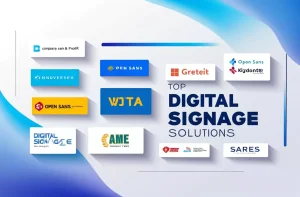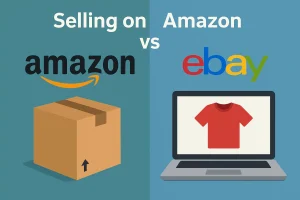Selling on Amazon vs eBay: What strategies work
Selling on Amazon vs eBay: What strategies work where?
In the ever-evolving world of eCommerce, choosing the right platform to sell your products is more than a tactical decision—it’s a strategic move that can shape the future of your business. As we enter 2025, Amazon and eBay remain dominant forces in online retail, each offering distinct advantages depending on what you sell, how you operate, and the audience you want to reach.
Amazon is the go-to marketplace for high-volume sellers offering new, fast-moving products. Its streamlined fulfillment network, vast user base, and trusted Prime ecosystem make it ideal for businesses aiming to scale quickly. On the other hand, eBay thrives as a diverse, flexible platform where unique, vintage, or collectible items often find their perfect buyers. Its auction model and lower upfront costs attract sellers who prioritize control and creativity.
But in 2025, which one is best for you?
This in-depth comparison will help you decide by exploring five key factors that influence your profitability and customer reach: Fees & Pricing, Audience & Traffic, Competition & Selling Models, Fulfillment & Logistics, and Ease of Use & Seller Support. Whether you’re a seasoned seller scaling operations or a newcomer launching your first product, this guide will equip you with data-driven insights to choose the marketplace that aligns best with your goals.
Fees & Pricing: Which Platform is Cheaper in 2025?
Understanding the cost structure of each platform is essential—not just for calculating margins, but for determining long-term sustainability. In 2025, fee policies on Amazon and eBay have evolved in markedly different ways, affecting how sellers budget and price their products.
Amazon Fees: A Scalable Investment for High-Volume Sellers
The referral fee that Amazon collects for each sale varies from 6% to 45%, depending on the product category. Most categories average around 15%, but the variation can significantly impact profit margins—especially in specialized niches like luxury goods or accessories.

Depending on the product’s size, weight, and storage time, sellers that use Fulfillment by Amazon (FBA) must pay more for shipping, packing, and storage. While these can add up, especially for oversized or slow-moving inventory, the benefit is access to Amazon Prime’s 250+ million members, which can drastically increase conversion rates.
- 2025 Update: Amazon has frozen referral and FBA fees across the U.S. this year—a strategic move that gives sellers more predictability. Notably, the Inbound Placement Service Fee for large items has dropped by an average of $0.58 per unit, easing the cost of handling bulky goods.
- New sellers also benefit from incentive programs that temporarily waive fees on new product listings, making it easier to test the waters without major upfront investment.
Amazon also offers two selling plans:
- Professional Plan: It is best suited for retailers with above 40 monthly sales ($39.99/month).
- Individual Plan: Great for small-scale or occasional retailers—only $0.99 per sale
eBay Fees: Accessible for Small Sellers, But Growing in 2025
eBay remains a flexible and approachable option, particularly for small businesses and individual sellers. It offers 250 free insertion listings per month, after which a $0.35 listing fee applies per item. This structure is great for testing products or selling irregularly without the pressure of recurring fees.
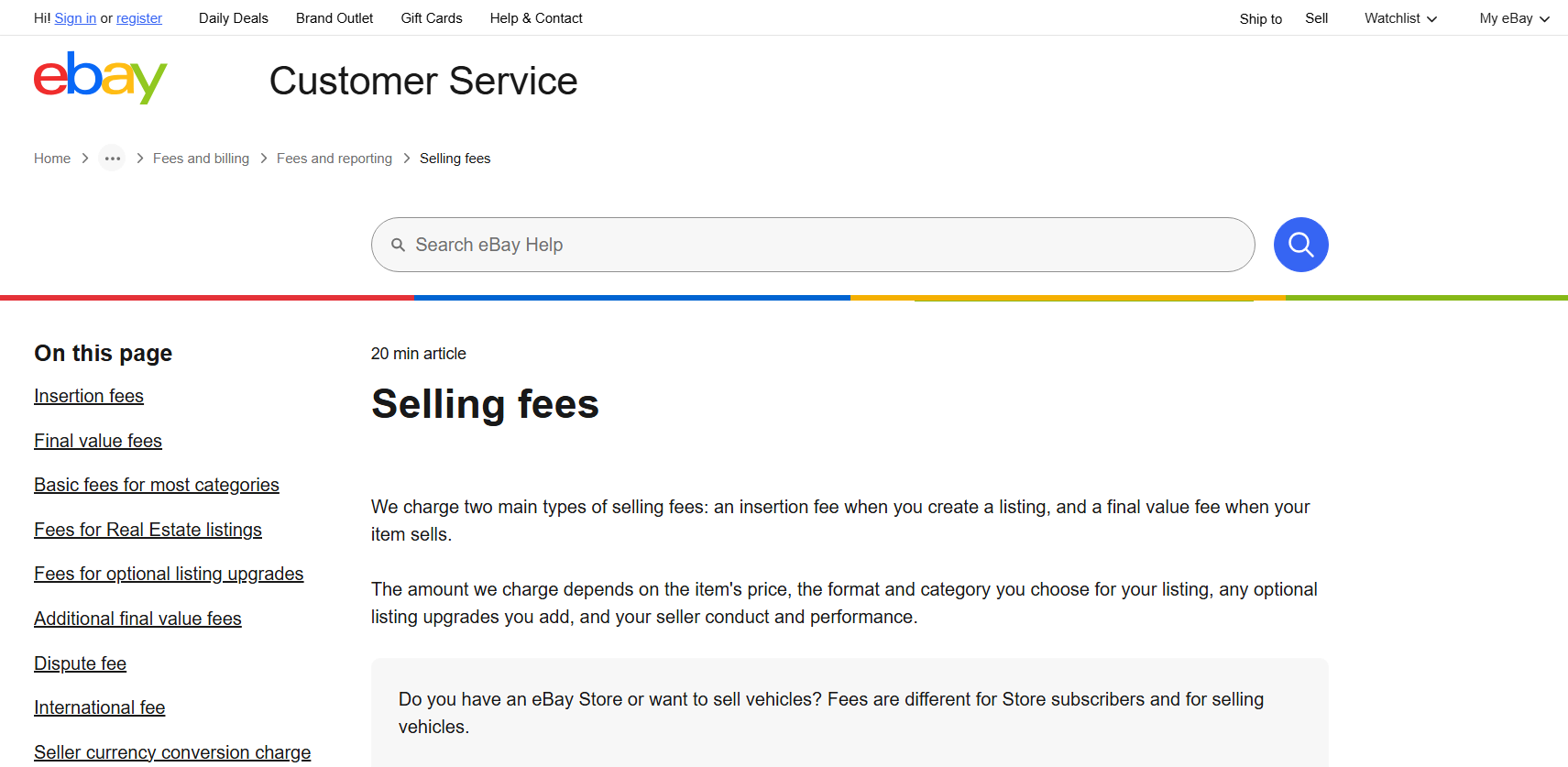
However, the Final Value Fees—charged as a percentage of the total sale—have increased in 2025 by up to 0.35% in most categories. For example:
- The proportion of clothes or electronics grew from 13.25% to 13.6%.
- Books and media: increased from 14.95% to 15.3%
There’s also a $0.40 per-order fee for sales over $10, up from $0.30 last year.
- Optional Costs: Sellers using Promoted Listings (eBay’s advertising service) incur additional fees based on campaign structure and placement bidding, which can enhance visibility but eat into profits if not carefully managed.
Head-to-Head Comparison
Feature | Amazon | eBay |
Referral/Final Fees | 6%–45% (avg. 15%) | 3%–15.3% (most items 13.6%) |
Subscription | $39.99/mo (Pro) or $0.99/item (Indiv.) | Free basic access; store subscriptions optional |
Fulfillment | FBA fees (variable) | Self-fulfillment (flexible costs) |
Listing Fees | None | First 250/month free, then $0.35/item |
2025 Update | Fee freeze + incentives | Fee increases in most categories |
Verdict: Choose Based on Volume and Strategy
- Amazon is a better choice for high-volume sellers who benefit from predictable fees, Prime visibility, and automated logistics—even with the higher fulfillment costs.
- eBay remains attractive to small-scale or occasional sellers thanks to free listings and lower entry barriers. However, the 2025 fee increases mean sellers must be more strategic, especially with high-ticket or media items.
Use Amazon’s fee calculator and eBay’s seller hub tools to estimate your product-specific costs and simulate different pricing strategies.
Audience & Traffic: Where Will Your Products Get More Visibility?
The size, behavior, and buying intent of your audience can determine how quickly your products sell—and how much effort you’ll need to put into marketing. In 2025, both Amazon and eBay boast massive global reach, but they attract different types of shoppers with distinct expectations.

Amazon: A Marketplace Built for Speed and Convenience
With over 310 million active users worldwide, Amazon remains the most dominant eCommerce platform globally. A significant portion of this traffic comes from high-intent buyers who rely on Amazon for fast, frictionless purchases—especially through Amazon Prime, which now exceeds 250 million members.
Amazon users are typically:
- Looking for brand-new, ready-to-ship products.
- Prioritizing fast delivery, reliability, and product consistency.
- Less price-sensitive—willing to pay a premium for Prime-eligible items.
- Frequently shopping from mobile apps, especially in the U.S., UK, Canada, and Germany.
This audience behavior makes Amazon an ideal platform for:
- Private label products
- Household essentials
- Electronics and tech accessories
- Health and wellness items
Because shoppers tend to search with specific intent, optimizing your listings with keywords, titles, and images can drive significant organic traffic.
eBay: A Marketplace for Treasure Hunters and Collectors
eBay’s user base sits at approximately 133 million active buyers globally, with a strong concentration of users in the U.S. (about 70% of its traffic). While smaller than Amazon’s audience, eBay’s users are often more engaged in discovery shopping—browsing for deals, bidding in auctions, or hunting for rare finds.
eBay shoppers are typically:
- Interested in used, vintage, or collectible items.
- Open to bidding and waiting several days for a deal.
- More price-conscious, often comparing listings to find bargains.
- Highly active on mobile, especially among 18–34-year-olds.
This audience makes eBay the go-to for:
- Secondhand items
- Antiques and memorabilia
- Refurbished tech
- Unique or handmade products
Because eBay’s user behavior leans toward exploration and browsing, creative descriptions and compelling photos play a bigger role in attracting buyers.
Audience Behavior at a Glance
Platform | User Base | Buyer Intent | Product Preference | Mobile Activity |
Amazon | 310M+ active users | Search-driven, buy-now | New, fast-moving items | Very high |
eBay | 133M+ active buyers | Browse-driven, deal-focused | Used, collectible, niche | Extremely high (esp. 18–34) |
Verdict: Match the Platform to Your Product Type
- Amazon delivers high visibility and rapid sales for mainstream, everyday items. If your products are optimized and fulfill common needs, you’ll benefit from Amazon’s massive, purchase-ready audience.
- eBay offers unique reach into niche communities, making it ideal for sellers of uncommon or specialized items who want to engage buyers looking for something different.
Pro Tip: If you sell both types of products, use Amazon to move standardized goods at scale and eBay to capture extra value from unique or limited inventory.
Competition & Selling Models: Fixed-Price vs. Auctions
Your ability to stand out in a crowded marketplace can make or break your success. In 2025, the competition landscape on Amazon and eBay reflects not only the volume of sellers, but also the selling models each platform supports—and the type of buyer you’re catering to.
Amazon: Speed, Reliability, and the Race for the Purchase Box
Multiple sellers may list the same goods on Amazon, which nearly entirely uses a fixed-price approach. The Buy Box, the conspicuous ‘Add to Cart’ button that determines which vendor wins the sale, is the main battlefield.

- Competitive pricing
- High seller ratings
- Fast fulfillment (especially via FBA)
- Low return rates
This makes competition fierce, especially in high-volume categories like electronics, apparel, health products, and home goods. If you’re selling a popular or commoditized product, expect dozens—if not hundreds—of competing listings.
eBay: Flexible Listings and Less Crowded Niches

eBay offers more flexibility in how you sell:
- Fixed-Price Listings: For straightforward sales, similar to Amazon.
- Auction Listings: Let buyers bid over 3, 5, 7, or 10 days, driving up the price for in-demand or rare items.
- Best Offer Option: Allows buyers to negotiate prices, a feature unique to eBay’s user-friendly, deal-seeking culture.
Competition tends to be lower in niche categories, especially for unique, vintage, or collectible items. Fewer sellers offer one-of-a-kind inventory, giving you more control over pricing and presentation.
Amazon vs. eBay Buyer Personas
Understanding who you’re selling to can guide your listing style, price points, and marketing strategy. Here’s how the typical 2025 buyer profiles differ:
Platform | Buyer Persona | Priorities | Product Preferences | Shopping Behavior |
Amazon | The Prime Professional Age 25–50, urban, busy | Speed, reliability, convenience | New, brand-name, everyday-use products | Intent-driven, quick decision-maker |
eBay | The Curious Collector Age 18–45, niche-focused | Uniqueness, price, nostalgia | Rare, vintage, refurbished, used goods | Browse-heavy, values storytelling |
Amazon buyers are more likely to:
- Know exactly what they want.
- Trust product reviews and ratings.
- Make purchase decisions in seconds.
- Be less sensitive to price if shipping is fast and hassle-free.
- Know exactly what they want.
- eBay buyers are more likely to:
- Enjoy browsing and comparing options.
- Participate in auctions or negotiate prices.
- Spend time reading detailed descriptions.
- Value the “story” behind the product.
- Enjoy browsing and comparing options.

Verdict: Choose Based on What You Sell—and Who You Sell To
- Use Amazon if you’re competing in high-demand categories and can win the Buy Box through pricing, fulfillment, and reputation.
- Use eBay if you sell items with unique value—where fewer competitors mean you can stand out based on product uniqueness, presentation, and negotiation.
If your product’s value is subjective or driven by rarity (e.g., collectibles, vintage fashion, signed memorabilia), auctions can yield higher profits than fixed-price listings.
Fulfillment & Logistics: FBA vs. Self-Fulfillment
How you fulfill orders has a direct impact on your profitability, customer satisfaction, and ability to scale. In 2025, both Amazon and eBay offer very different logistics models—each with unique advantages depending on your business’s size, product type, and operational capacity.
Amazon: Fulfillment by Amazon (FBA) – Fast, Scalable, but Costly
FBA (Fulfillment by Amazon) remains a dominant force in 2025 for sellers aiming to grow quickly and deliver fast. When you use FBA:

- Your inventory is kept at Amazon’s fulfillment centers.
- Among their offerings are product selection, order packaging, product shipment, customer support, and return processing.
- Your products become Prime-eligible, drastically increasing visibility and conversion rates.
Pros of FBA:
- Access to 250+ million Prime customers who expect 1–2 day shipping.
- “Hands-off” logistics—ideal for scaling operations without hiring staff.
- Amazon manages returns and customer service, saving you time.
- In 2025, no increases in FBA or referral fees, and Amazon has introduced reduced inbound placement fees for oversized items (e.g., $0.58/unit savings on average).
Cons of FBA:
- Increased costs for order processing and inventory storage, particularly for slow-selling or less profitable products.
- Less control over packaging and branding.
- Holding onto inventory for too long can lead to high storage costs, reducing your overall profits.
- More complex to manage returns if your product has variable quality or subjective satisfaction.
Ideal for:
- Sellers offering high-demand, standardized items like electronics, pet supplies, home goods, or beauty products.
- Entrepreneurs focused on speed, automation, and scaling.
eBay: Self-Fulfillment – Flexible and Cost-Effective
On eBay, the fulfillment model is predominantly seller-managed. You’re responsible for warehousing, packing, shipping, and customer support unless you opt into programs like the eBay Global Shipping Program (GSP), which assists with international deliveries by handling customs and final-mile logistics.

Pros of eBay Fulfillment:
- Full control over shipping methods, packaging, and handling times.
- No mandatory fulfillment fees—saves money for low-volume or high-margin items.
- Ability to personalize packaging or include promotional inserts.
- eBay GSP simplifies international sales by handling customs clearance and final delivery.
Cons:
- Time-intensive logistics—especially challenging for solo sellers or small teams.
- Customer service and returns are fully your responsibility.
- Complex international shipping if not using GSP.
- Slower delivery times compared to Prime, which can reduce competitiveness.
Ideal for:
- Sellers dealing in niche, collectible, or one-of-a-kind items.
- Businesses with warehousing infrastructure or those wanting to maximize margins by cutting fulfillment costs.
Side-by-Side Comparison: Amazon FBA vs. eBay Self-Fulfillment (2025)

Feature | Amazon FBA | eBay Fulfillment |
Who Handles Fulfillment | Amazon | Seller |
Shipping Speed | 1–2 days (Prime) | Variable |
Customer Service & Returns | Managed by Amazon | Managed by Seller |
Fees | Higher (but stable in 2025) | Lower upfront |
Control | Limited (standard Amazon packaging) | High (custom branding possible) |
International Shipping | Amazon Global | eBay Global Shipping Program |
Best For | High-volume, standardized products | Low-volume, unique, or collectible goods |
Verdict: Choose Based on Scale, Control, and Product Type
- Choose Amazon FBA if you want rapid fulfillment, less operational hassle, and access to Prime buyers. It’s ideal for businesses ready to scale quickly and accept tighter profit margins for greater reach.
- Choose eBay self-fulfillment if you prefer to control every aspect of shipping and packaging or sell items that don’t justify FBA’s storage and handling costs.
Ease of Use & Seller Support: Which Is Better for Beginners?
For new sellers, the learning curve and available support can significantly affect how quickly and confidently you launch and grow. In 2025, Amazon and eBay continue to cater to different seller needs when it comes to usability, onboarding, and platform complexity.
Amazon: Powerful Tools, Steep Learning Curve
Amazon offers an advanced backend—Seller Central—with a suite of tools for advertising, reporting, listing optimization, and inventory management.
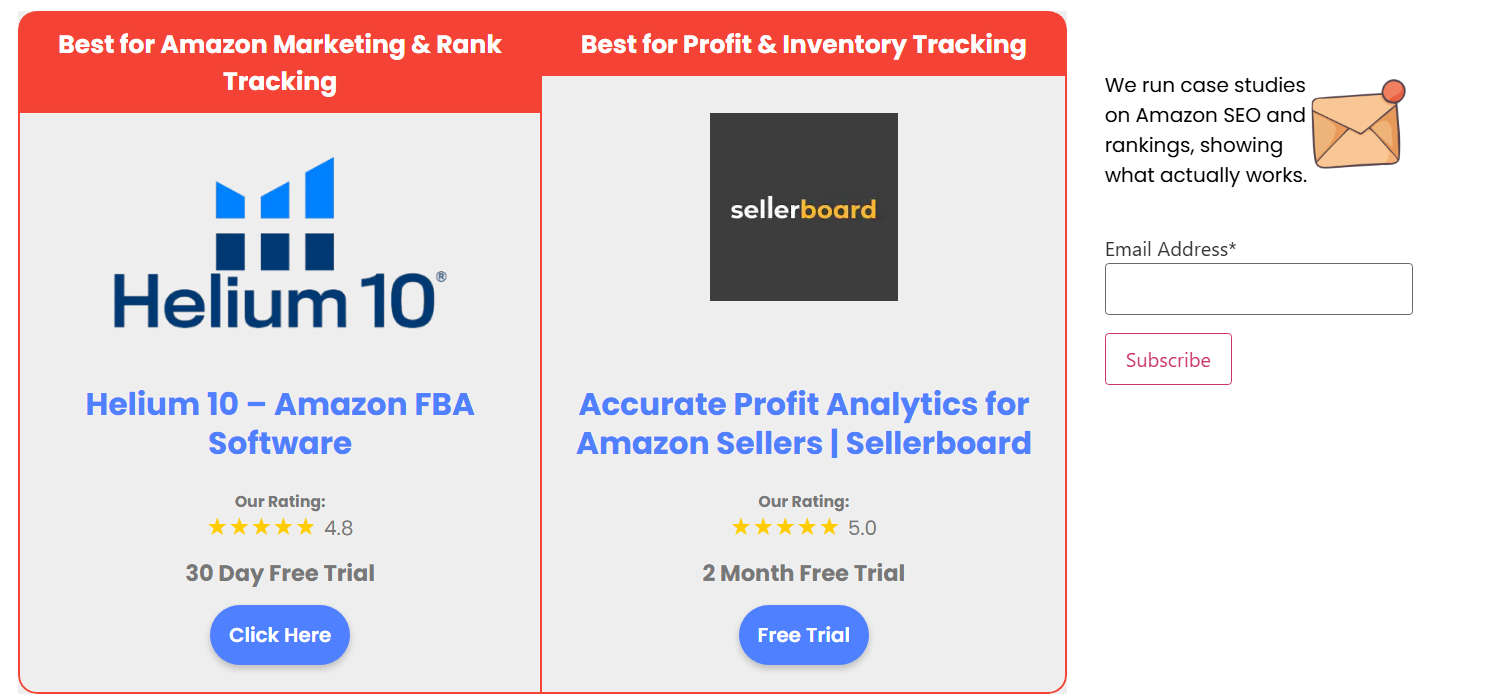 While these features are robust, they can be overwhelming for new sellers.
While these features are robust, they can be overwhelming for new sellers.
Pros:
- Deep analytics, advertising tools (e.g., Amazon Ads, A+ Content), and brand-building options for registered brands.
- Automated pricing tools, inventory alerts, and performance metrics help sellers scale efficiently.
- Access to educational resources like Seller University, forums, and live webinars.
Cons:
- Complex interface requires time to master—especially for FBA sellers managing inbound shipments, returns, and compliance.
- Strict listing policies and performance standards; a single policy violation can lead to account suspension.
- Customer experience is prioritized, sometimes at the seller’s expense (e.g., auto-approving returns).
Best For:
- Experienced eCommerce sellers or businesses ready to scale.
- Sellers investing in private label, branded products, or long-term eCommerce infrastructure.
eBay: Simpler Interface, Flexible Setup
eBay offers a more intuitive platform with fewer restrictions and a flexible listing process. It’s designed to be accessible—even for casual or hobbyist sellers—with lower risks and simpler compliance requirements.
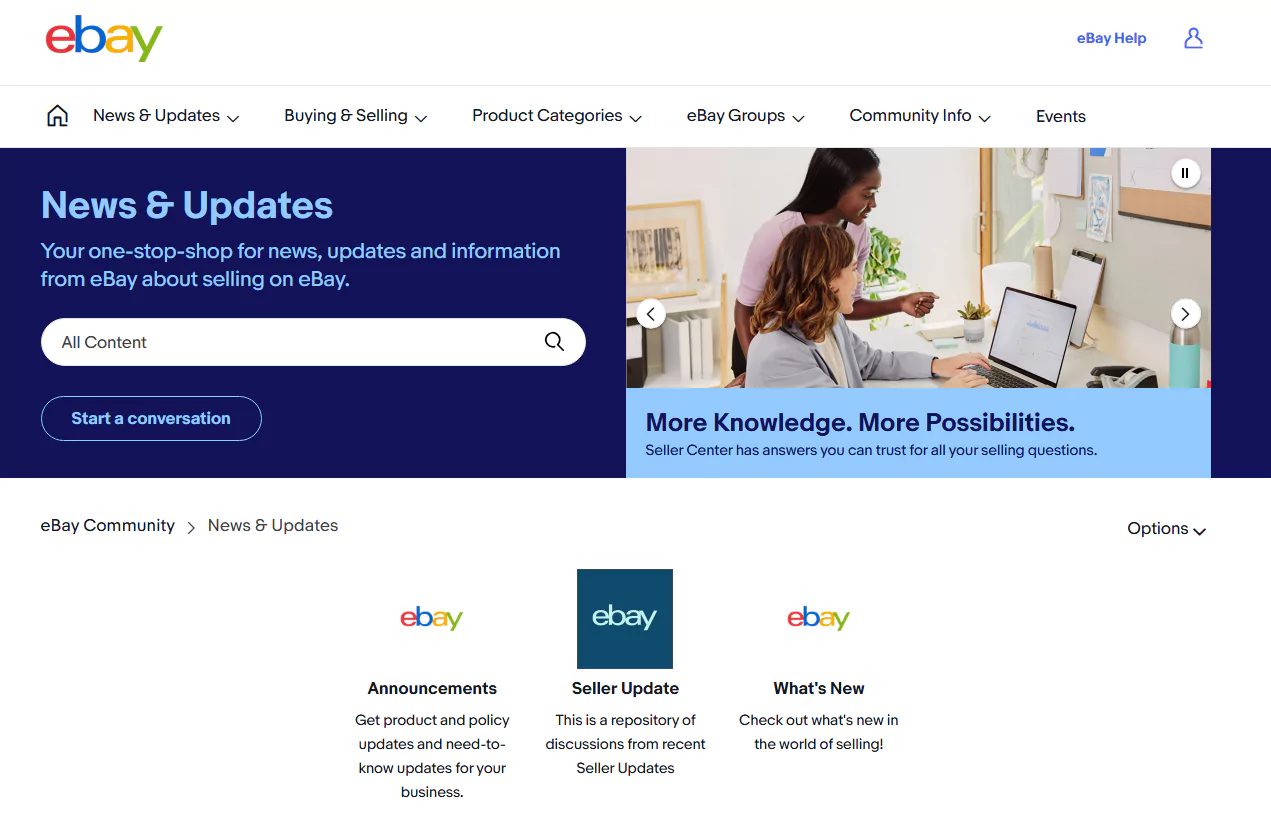
Pros:
- Quick and easy listing process—especially for used, collectible, or one-off items.
- Less stringent policies on listings, images, and fulfillment timelines.
- 250 free listings per month allow low-risk experimentation with different product types.
Cons:
- Fewer advanced tools for advertising, automation, and brand management.
- Basic reporting and analytics; sellers may need third-party tools for deeper insights.
- Customer service and return management are completely up to the seller.
Best For:
- Beginners who want a frictionless start or want to sell casually.
- Sellers offering unique or second-hand items with varying condition or pricing.
Platform Comparison: Seller Friendliness (2025)

Feature | Amazon | eBay |
Ease of Setup | Moderate to difficult | Easy |
Listing Process | Structured, requires optimization | Flexible, fewer requirements |
Learning Curve | Steep | Gentle |
Support Resources | Extensive (but policy-driven) | Adequate (basic, community-based) |
Seller Control | Lower (especially FBA) | Higher |
Risk of Suspension | Higher (strict performance metrics) | Lower |
Best for | Scalable, high-growth sellers | Beginners and niche sellers |
Verdict: Start Where You’re Most Comfortable
- Choose eBay if you’re a beginner looking for a low-risk, low-cost entry into eCommerce with simpler tools and more control.
- Choose Amazon if you’re serious about scaling, have product-market fit, and are ready to invest in learning the platform’s systems.
Many sellers start on eBay to test products and build cash flow, then transition to Amazon once they’re ready to scale.
Comparison Table: Feature-by-Feature Breakdown
Readers love skimmable insights. Adding a side-by-side comparison table of key features—fees, audience, tools, fulfillment, support—offers quick clarity and boosts time-on-page.
Feature | Amazon | eBay |
Active Users | 310M+ | 133M+ |
Seller Fees (2025) | Stable; 15% avg + FBA/Subscription | Increased by 0.35%; lower for low volume |
Fulfillment | FBA (Amazon handles everything) | Self-fulfillment / Global Shipping Program |
Listing Types | Fixed-price only | Auctions + Fixed-price |
Product Focus | Standardized, high-demand | Unique, vintage, collectible |
Setup Complexity | Moderate to High | Low to Moderate |
Best For | Scaling brands, volume sellers | Niche sellers, collectors, side hustlers |
Buyer Psychology: Decision-Making Triggers
Introduce a short section that dives into how buyers behave on each platform—what motivates them to buy, and what kind of language or visuals convert.
- Amazon Buyers: Trust authority and speed. They respond well to social proof (reviews), fast shipping badges (Prime), and optimized titles.
- eBay Buyers: Love value, uniqueness, and discovery. They respond to storytelling, rarity, and detailed condition descriptions.
Tailor your product listings to the platform’s mindset. Amazon needs SEO precision. eBay needs emotional pull.
Expert Quotes or Seller Testimonials
Even one or two short quotes from real sellers (or fictional composites if needed) adds authenticity.
“Amazon helped us scale from a garage to a warehouse in under 18 months. But eBay still moves our rare inventory every week.” — Greg T., hybrid seller since 2019
International Seller Perspective
Briefly touch on how international sellers can approach each platform—this expands the blog’s relevance.
- Amazon: Offers FBA Global Export and localized marketplaces (e.g., Amazon.ca, Amazon.de).
- eBay: Easier international access via the Global Shipping Program; customs handled for you.
Scaling Strategy: When to Switch or Add Platforms
A small section could guide sellers on when to expand—ideal for readers who start with one and grow into both.
Example:
Start on eBay if you’re testing a niche product or have limited inventory. Once validated, scale your winners on Amazon for reach and automation.
What About Etsy, Walmart, or Shopify?
Why It Matters: Amazon and eBay aren’t the only options. As eCommerce grows, sellers often wonder if platforms like Etsy, Walmart Marketplace, or self-hosted sites like Shopify are better alternatives.

Quick Snapshot Comparison:
Platform | Best For | Key Advantage | Key Limitation |
Amazon | High-volume retail | Scale, Prime access | High fees, intense competition |
eBay | Collectibles, used | Auctions, flexible pricing | Lower traffic, rising fees |
Etsy | Handmade/vintage | Creative niche buyers | Strict category limitations |
Walmart Marketplace | Branded retail goods | Low seller fees | Rigid approval process |
Shopify | DTC brands | Full control, branding | Must drive your own traffic |
Insight: If your long-term goal is to build a brand, consider starting on Amazon/eBay to test products, then scale with Shopify or Walmart as you grow.
Real Seller Scenarios
Scenario 1: The Vintage Collector
- Selling: 1980s toys, comic books, and rare vinyl records
- Best Platform: eBay (lower fees, passionate buyer base, auction potential)
Scenario 2: The Private Label Seller
- Selling: Branded home goods under a custom logo
- Best Platform: Amazon FBA (massive reach, scalable logistics)
Scenario 3: The Part-Time Hustler
- Selling: Random garage sale finds and seasonal items
- Best Platform: eBay (free listings, low risk, simple setup)
Scenario 4: The Boutique Brand Owner
- Selling: Natural skincare with custom packaging
- Best Platform: Start on Amazon, graduate to Shopify (brand building, subscription potential)
Mobile Selling Experience: Which App is Better?
In 2025, 70–80% of eCommerce traffic comes from mobile devices. The seller app experience matters more than ever.
Feature | Amazon Seller App | eBay Seller Hub App |
Listing Management | Advanced, bulk tools | Simple, quick for individual listings |
Order Fulfillment | Linked to FBA | Manual but flexible |
Messaging & Support | Integrated but policy-heavy | Easier to resolve cases |
Best For | Pro sellers scaling up | Casual or niche sellers |
Tip: Both apps are solid, but Amazon’s is better for analytics and scaling. eBay’s is more intuitive for quick listings and communication.
Expert Insights: 2025 Trends You Should Watch
- AI-Driven Recommendations: Amazon now uses generative AI to auto-create listings, while eBay recommends optimal pricing based on demand and condition.
- Sustainability Matters: eBay’s used marketplace aligns with the green economy. Amazon’s climate pledge badge may boost visibility for eco-friendly brands.
- Cross-Border Selling: Both platforms are expanding global support, but eBay’s Global Shipping Program remains the simplest entry point.
Wrap-Up CTA Enhancement (Optional Visual)
Consider adding a visual checklist or flowchart at the end:
- A decision flow: “Which Platform Should You Sell On?”
- A downloadable “2025 Amazon vs eBay Seller Toolkit” PDF
A short video or animation summarizing the key takeaways (Sora-generated?)
Final Verdict: Should You Sell on Amazon or eBay in 2025?
Choosing between Amazon and eBay isn’t about which platform is “better” overall—it’s about which one aligns with your business goals, product types, and operational capabilities in 2025. Both marketplaces have evolved to serve different seller profiles, and many successful businesses use them together to maximize reach and profitability.
Choose Amazon if…
- You sell new, fast-moving, or private-label products in categories like electronics, household goods, or health and beauty.
- You want to scale quickly using Fulfillment by Amazon (FBA) and tap into the massive Amazon Prime customer base (over 250M members).
- You are prepared to optimize listings, manage strict performance metrics, and use advanced seller tools (like Amazon Ads, Brand Registry, etc.).
- You have the resources to handle higher upfront costs in exchange for greater automation and customer trust.
Best Fit: Brands and volume sellers aiming to scale with automation, visibility, and global reach.
Choose eBay if…
- You sell unique, used, vintage, refurbished, or collectible items—anything where product differentiation matters more than scale.
- You want more control over your listings, shipping, and return policies, and you prefer a simpler, lower-cost setup.
- You’re starting out or testing products and don’t want to commit to monthly fees or advanced fulfillment systems.
- You value auction-based selling or serve a niche audience of collectors, bargain hunters, or hobbyists.
Best Fit: Hobbyists, small sellers, and niche entrepreneurs with unique or secondhand inventory.

Best of Both Worlds: Use Both Platforms Strategically
Many savvy sellers in 2025 don’t choose—they diversify. Here’s how:
Strategy | Amazon | eBay |
Everyday items & private label | ✅ | ❌ |
Used or collectible inventory | ❌ | ✅ |
High-volume, automated sales | ✅ | ❌ |
Low-risk product testing | ❌ | ✅ |
Global logistics support | ✅ (FBA Global Export) | ✅ (Global Shipping Program) |
Total customer base | 310M+ | 133M+ |
By using Amazon for high-volume, standardized goods and eBay for niche, collectible, or one-off items, you can maximize exposure, balance risk, and serve distinct buyer personas.
Actionable Tips to Get Started:
- Use Amazon’s Fee Calculator to determine your profitability before listing.
- Take advantage of eBay’s 250 free listings/month to test-market products at no cost.
- Invest in professional images and keyword-rich titles for both platforms—quality listings convert.
- Consider multi-channel software (like Sellbrite, Shopify integrations, or InkFrog) to manage inventory across Amazon and eBay seamlessly.
Final Call to Action
Still not sure which platform suits your business best? Drop a comment below with your product type and business model—we’ll help you decide!
And don’t forget to subscribe to our newsletter for weekly strategies, marketplace updates, and seller tips for 2025 and beyond.
eBay generally has lower upfront fees (free listings for the first 250 items), while Amazon charges higher referral fees (6%–45%) and subscription costs. However, Amazon’s Prime traffic can justify the fees for high-volume sellers.
eBay’s 135 million customers are perfect for specialized, used, or collectible items, while Amazon offers a wider audience with over 300 million active users.
Amazon allows used items only in specific categories (e.g., books, electronics), while eBay is more flexible and popular for secondhand goods.
Amazon FBA simplifies fulfillment (storage, packing, shipping) but adds fees. eBay gives you control over shipping costs and methods, which can save money for small sellers.
eBay has a simpler listing process and fewer upfront costs, making it more beginner-friendly. Amazon’s Seller Central has a steeper learning curve but offers automation tools for scaling.
Auctions work well for rare/unique items on eBay, while fixed pricing on Amazon suits everyday products. Most eBay sellers now use fixed-price listings too.
Yes! Amazon’s FBA handles global logistics, while eBay’s Global Shipping Program simplifies cross-border sales.
Amazon enforces strict rules (e.g., late shipping penalties, product condition guidelines). eBay is more lenient but has strong buyer protection policies.
Amazon has fiercer competition in popular categories (electronics, beauty), while eBay is less saturated for niche/used items.
Yes! Many sellers use both platforms to maximize reach. Tools like inventory management software help avoid overselling.
Amazon Handmade targets premium buyers (with a Prime audience), while eBay is better for affordable, customizable, or vintage crafts.

